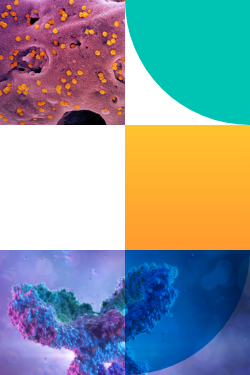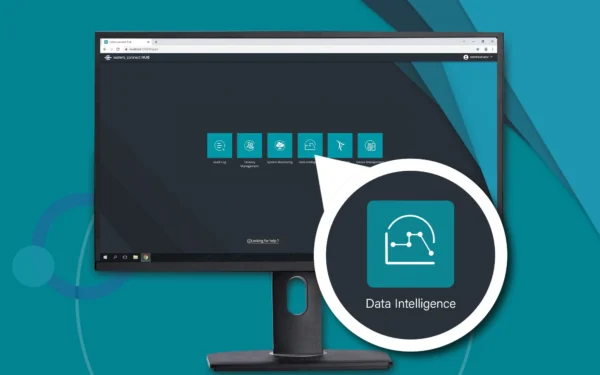Flow cytometry is a versatile and powerful technique that’s widely used in many fields of biological, medical and clinical research. Without it, valuable insights into the complexity of biological systems may have been missed. But what is flow cytometry and how does it actually work?
In this article, we’ll explore flow cytometry in further detail and cover the following topics:
- What is flow cytometry?
- How does flow cytometry work?
- What are the applications of flow cytometry?
- What is flow cytometry gating analysis?
- What is flow cytometry compensation?
- What is flow cytometry propidium iodide cell cycle protocol?
- Unlock advanced insights with Sapio’s flow cytometry software
What is flow cytometry?
As a powerful technique used to analyze and quantify the properties of individual cells or particles in a sample, flow cytometry involves the use of a flow cytometer, a specialized instrument that is capable of detecting and analyzing multiple physical and chemical characteristics of cells or particles as they flow in a liquid stream through a laser beam.
These cells or particles are first labeled with fluorescent dyes or antibodies that recognize specific markers on the cell surface or inside the cell. As the labeled cells pass through the laser beam, they emit fluorescent light that is captured by the flow cytometer and analyzed in real-time.
The flow cytometer can measure a variety of properties of the labeled cells, including size, shape, granularity, fluorescence intensity, and DNA content. This information can be used to identify and quantify different cell types, measure cell cycle progression, assess protein expression levels, and analyze cellular signaling pathways.
Flow cytometry is widely used in many fields of biological and medical research, including immunology, cancer biology, stem cell research, and drug development. It is also used in clinical settings for the diagnosis and monitoring of various diseases, such as leukemia and HIV/AIDS.
Overall, flow cytometry is a versatile and powerful technique that allows for the rapid analysis of large numbers of individual cells, providing valuable insights into the complexity of biological systems.
How does flow cytometry work?
Flow cytometry works by utilising the flow cytometer to analyze and quantify the properties of individual cells or particles in a sample. The process involves several key steps:
1. Sample Preparation
The sample is first prepared by treating it with fluorescent dyes or antibodies that bind to specific markers on the surface or inside the cell. These markers can be used to identify different cell types or measure other properties of the cells, such as DNA content.
2. Flow Cell
The prepared sample is then loaded into a flow cell, which is a narrow, tube-like channel that allows the cells to flow in a single file stream. This stream of cells is then passed through a laser beam, where laser excitation takes place.
3. Laser Excitation
As the cells pass through the laser beam, they scatter light in different directions depending on their size, shape, and optical properties. The laser beam also excites the fluorescent dyes or antibodies, causing them to emit light that is detected by the flow cytometer.
4. Optical Detectors
The flow cytometer contains multiple optical detectors that measure the light scattered by the cells as well as the fluorescent emissions from the dyes or antibodies. These detectors are able to measure several physical and chemical properties of the cells, including size, shape, granularity, fluorescence intensity, and DNA content.
5. Data Analysis
The data collected by the flow cytometer is then processed and analyzed by specialized LIMS and ELN software, which can provide detailed information about the properties of the cells or particles in the sample. This information can be used to identify and quantify different cell types, measure cell cycle progression, assess protein expression levels, and analyze cellular signaling pathways.
What are the applications of flow cytometry?
As a highly versatile technique, flow cytometry is used for a wide range of applications in biological and medical research, as well as in clinical diagnostics. Some of the most common uses of flow cytometry include:
- Cell analysis: Flow cytometry is widely used to analyze the properties of individual cells, including their size, shape, granularity, and surface markers. This information can be used to identify and quantify different cell types, such as immune cells, stem cells, or cancer cells.
- Cell sorting: Flow cytometry can be used to physically separate different types of cells based on their properties. This is achieved by using the flow cytometer to detect and sort cells into different containers based on their fluorescence and other characteristics.
- DNA analysis: Flow cytometry can be used to measure DNA content in individual cells, allowing researchers to study the cell cycle and cell division.
- Protein analysis: Flow cytometry can be used to measure the expression levels of specific proteins in individual cells, providing insights into cellular signaling pathways and protein-protein interactions.
- Microbial analysis: Flow cytometry can be used to analyze microbial populations in environmental samples, such as soil or water, providing insights into microbial diversity and community structure.
- Immunophenotyping: Flow cytometry is commonly used to analyze the expression of cell surface markers on different cell types, particularly in immunology research. Immunophenotyping can provide valuable information on cell function, differentiation, and activation state.
- Apoptosis analysis: Flow cytometry can be used to detect apoptotic cells in a population based on changes in their physical and chemical properties. Apoptosis analysis can provide insights into cell death mechanisms and is useful in drug discovery and cancer research.
- Intracellular protein analysis: Flow cytometry can be used to analyze intracellular proteins in cells, such as transcription factors or signaling molecules. This technique involves permeabilizing cells to allow antibodies to access intracellular proteins and is useful for studying signaling pathways and gene regulation.
What is flow cytometry gating analysis?
Flow cytometry analysis is built upon the principle of gating, which is the process of positioning gates and regions around cell populations that share common characteristics, such as forward scatter (FSC), side scatter (SSC), and marker expression, in order to study and measure specific populations and areas of interest.
Gating is a tried and tested method for flow cytometry data analysis and allows for extensive insights into individual cells within a population. Despite this, there are some limitations that come with manual gating. As it relies on the judgment of the researcher, this can introduce variability and subjectivity into the analysis. Different researchers may draw gates differently, leading to inconsistent results and hamper reproducibility. It is also time-consuming, especially when dealing with large datasets or complex populations of cells. It may require iterative adjustments to find the optimal gating strategy.
Thankfully, Sapio’s flow cytometry ELN expedites research efforts through gating automation using machine learning, removing a large burdensome task from scientists and removing the potential for variability skewing analysis results.
What is flow cytometry compensation?
Flow cytometry compensation is a process that corrects for spectral overlap between different fluorescent probes used in a flow cytometry experiment. Spectral overlap occurs when the emission spectrum of one fluorophore overlaps with the excitation or emission spectrum of another fluorophore, leading to signal bleed-through and inaccurate measurement of fluorescence intensities. Compensation involves subtracting the signal from each fluorophore from the signal detected in other channels to correct for this overlap.
Compensation is necessary in flow cytometry experiments where multiple fluorescent probes are used to label different cell populations or biomolecules. These probes emit fluorescence at different wavelengths, which can overlap with other probes or with the autofluorescence of the cells being analyzed. If compensation is not applied, the fluorescence intensities of the different probes will be inaccurate, leading to an incorrect interpretation of the data.
The compensation process is typically performed using control samples that are singly stained with each fluorescent probe or with a combination of two probes. These control samples are used to calculate the spillover coefficient or compensation matrix, which quantifies the amount of fluorescence signal that is detected in each channel due to spectral overlap from the other channels. The compensation matrix can then be applied to the data from the experimental samples to correct for spectral overlap.
Overall, compensation is an essential step in flow cytometry experiments that involve multiple fluorescent probes, as it ensures accurate measurement of fluorescence intensities and improves the quality of the data.
What is flow cytometry propidium iodide cell cycle protocol?
The propidium iodide (PI) cell cycle protocol is a common flow cytometry application used to analyze the cell cycle progression of a population of cells. This protocol involves staining cells with PI, a fluorescent DNA binding dye that intercalates into double-stranded DNA, and then measuring the fluorescence intensity of the cells using flow cytometry.
The general protocol for the propidium iodide cell cycle analysis is typically:
1. Harvest cells
Harvest cells using standard cell culture techniques and suspend them in a single-cell suspension.
2. Fix cells
Fix cells with 70% ethanol or a similar fixative solution to stabilize the cell membranes and prevent DNA degradation.
3. Stain cells with PI
Resuspend cells in a buffer containing PI and RNase. PI binds to the DNA in cells, and RNase helps to remove RNA from the cells to prevent interference with the analysis. Incubate cells for at least 30 minutes at 37°C in the dark.
4. Analyze cells using flow cytometry
Analyze cells using a flow cytometer with excitation at 488 nm and emission at 585 nm. The fluorescence intensity of the stained cells is proportional to the DNA content of the cells. The flow cytometer generates a histogram of fluorescence intensity that represents the distribution of cells in different phases of the cell cycle (G0/G1, S, and G2/M).
5. Data analysis
Analyze the flow cytometry data using specialized LIMS & ELN software to calculate the percentage of cells in each phase of the cell cycle. The software can also generate graphs and other visual representations of the data.
Overall, the propidium iodide cell cycle protocol is a widely used technique for analyzing the cell cycle progression of a population of cells using flow cytometry.
Learn more about flow cytometry propidium iodide cell cycle protocol.
Unlock advanced insights with Sapio’s flow cytometry software
With applications in a wide range of fields including immunology, cancer biology and drug testing,
flow cytometry is a powerful technique that’s used by many laboratories in their R&D. But many scientists face challenges with legacy tools that slow down their research efforts due to outdated interfaces and lack of compatibility with web-based ELN and LIMS software.
Sapio’s specialized flow cytometry ELN solutions are the answer. Requiring no software download and seamless integration with our Electronic Lab Notebook (ELN), you’re able to automate and enhance your flow cytometry data analysis techniques with ease.
To find out more about our flow cytometry software, or any of our solutions, get in touch or request a demo today.





